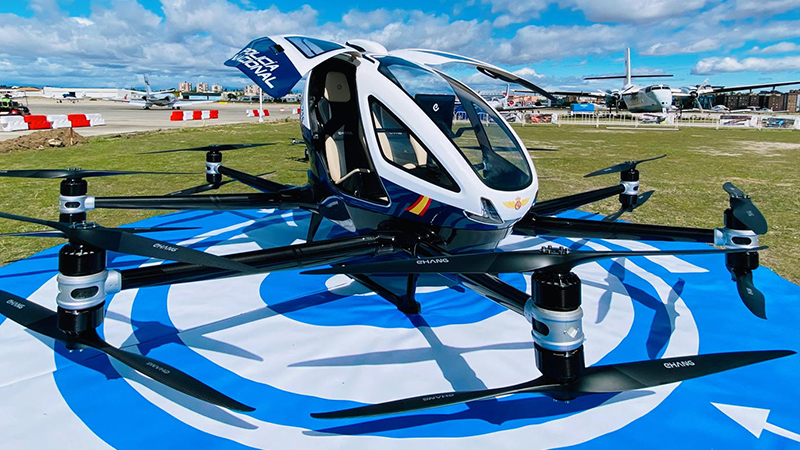

The idea of autonomous police aircraft sounds like something from Robocop or Judge Dredd. But, as is often the case with sci-fi, fiction is quickly becoming reality.
The impact of eVTOLs on policing has the potential to be revolutionary. Let us look at police eVTOLs in greater depth to understand how the technology will apply to this branch of emergency response.
Several companies have already jumped at the chance to develop a police eVTOL. First, there is Swiss Manta Aircraft, currently working on an electric VTOL/STOL aircraft. It has concept designs for single- and double-seat versions built on the same airframe.
Its design will be of little use in the air taxi market, so it is instead marketing it as a “personal air mobility” vehicle. In commercial terms, this could mean a single-officer aircraft fulfilling the role of first-response. The second seat could either carry a second officer or, if necessary, an arrestee.
Another company entering this market is EHang, the Chinese eVTOL firm. It has already worked on firefighting and organ transport models, so developing a police response vehicle seems like an obvious next step. EHang announced in early October that it has partnered with Spanish National Police to test an adaptation of its 216 AAV.
The partnership will test the viability of eVTOLs in police response situations to determine whether it improves safety and reduces response times. The 216 is a two-seat eVTOL, so could fill the same role as Manta’s fixed-wing design.
Taking a completely different approach to the situation is Russia-based Hover. It owns the Hover Scorpion, a multicopter hoverbike being tested by Dubai’s police force. The Scorpion will fill the same niche as police motorbikes: fast response and greater mobility.
Like other potential applications of eVTOLs, their use in policing is wide-reaching. Perhaps, as technology improves, we might see eVTOL versions of police vans or flying police cars akin to Blade Runner.
Although not the most interesting use of eVTOLs, policing stands to benefit massively from the technology. Much like emergency medical response, removing the obstacle of road traffic would greatly reduce travel time, meaning police can be at the scene much faster.
EHang and Manta’s two-seat aircraft would be suitable for surveillance and some response calls. But, they are currently not viable for arrest situations, as transporting a violent offender in the passenger seat of an aircraft would compromise the officer’s safety.
They would, however, be perfect for roles currently served by police helicopters. eVTOLs operate with less noise than a helicopter, so covert surveillance or tracking would be easier, and fitting them with the required hardware would not present much of a challenge.
There are few drawbacks to using manned eVTOLs in police applications, aside from officer safety. However, the biggest challenge with autonomous eVTOLs is an ethical one. Would officers have any control over flight paths? If not, would this present issues with their ability to perform their duties?
Although an eVTOL’s autonomy would have no direct impact on interactions with people, it could affect public opinion. Police perception already hangs on a knife-edge in many areas of the population, and previous incidents involving police robot dogs and autonomous drones are vital learning opportunities.
So, how will the future of eVTOLs in policing look? The practical future is clear: faster response times and greater manoeuvrability. But, the ethical considerations of autonomy are muddier. Many people resent the combination of “policing” and “autonomous”, so capturing public opinion may prove the biggest challenge of all.